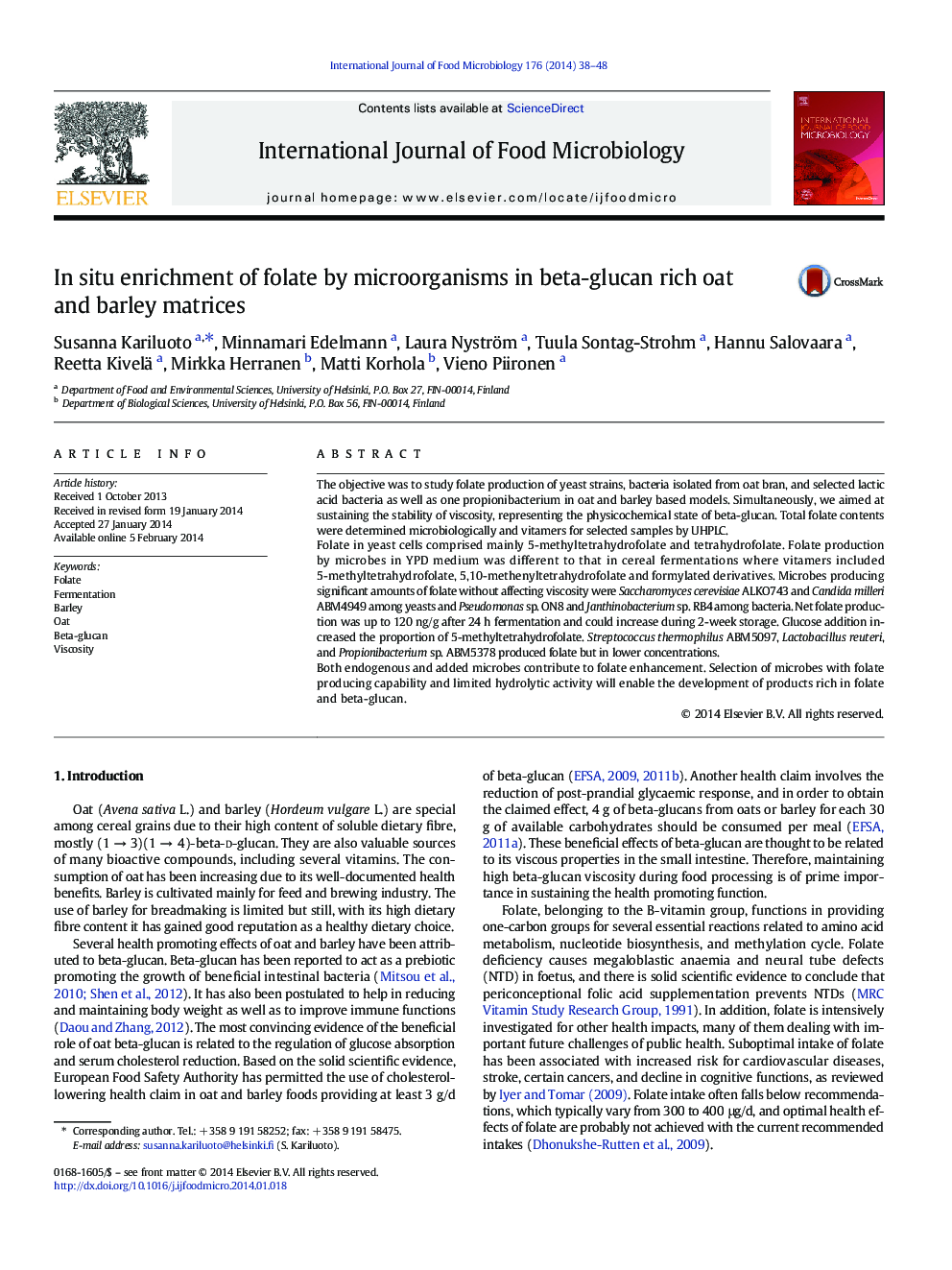| Article ID | Journal | Published Year | Pages | File Type |
|---|---|---|---|---|
| 4366941 | International Journal of Food Microbiology | 2014 | 11 Pages |
•Yeast strains had different vitamer patterns with 5-CH3–H4 and H4 as the major vitamers.•Folate-producing microbes without detrimental effect on viscosity were identified.•Folate content could reach 150 ng/g in 24 h and even up to 300 ng/g after 2-week storage.•Addition of glucose directed folate synthesis towards 5-methyltetrahydrofolate
The objective was to study folate production of yeast strains, bacteria isolated from oat bran, and selected lactic acid bacteria as well as one propionibacterium in oat and barley based models. Simultaneously, we aimed at sustaining the stability of viscosity, representing the physicochemical state of beta-glucan. Total folate contents were determined microbiologically and vitamers for selected samples by UHPLC.Folate in yeast cells comprised mainly 5-methyltetrahydrofolate and tetrahydrofolate. Folate production by microbes in YPD medium was different to that in cereal fermentations where vitamers included 5-methyltetrahydrofolate, 5,10-methenyltetrahydrofolate and formylated derivatives. Microbes producing significant amounts of folate without affecting viscosity were Saccharomyces cerevisiae ALKO743 and Candida milleri ABM4949 among yeasts and Pseudomonas sp. ON8 and Janthinobacterium sp. RB4 among bacteria. Net folate production was up to 120 ng/g after 24 h fermentation and could increase during 2-week storage. Glucose addition increased the proportion of 5-methyltetrahydrofolate. Streptococcus thermophilus ABM5097, Lactobacillus reuteri, and Propionibacterium sp. ABM5378 produced folate but in lower concentrations.Both endogenous and added microbes contribute to folate enhancement. Selection of microbes with folate producing capability and limited hydrolytic activity will enable the development of products rich in folate and beta-glucan.
